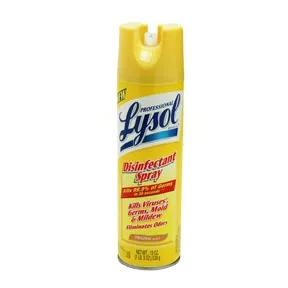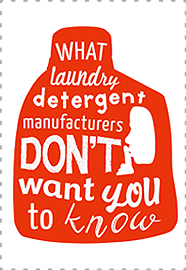Top 12 Cancer causing products in the average home
No better time to change stores and shop at a online wellness store at whole sale prices!!!
The Top 12 Cancer-Causing products in the Average Home
Among many other cancer causing products commonly found in the home, this dirty dozen list has made it to the Hall of Shame. The Cancer Prevention Coalition (CPC) and Ralph Nader have released a “Dirty Dozen” list of consumer products used in most American homes, and manufactured by giant U.S. corporations.
The “Dirty Dozen” products contain a wide-range of carcinogenic and other toxic ingredients and contaminants to which most of us are exposed daily.
COSMETICS AND PERSONAL CARE PRODUCTS
Talcum Powder– (Johnson & Johnson. Inc.)
Labeled Toxic Ingredient:
TALC, Carcinogenic and a risk factor for ovarian cancer; lung irritant.
TALC, Carcinogenic and a risk factor for ovarian cancer; lung irritant.
Cover Girl Replenishing Natural Finish Make Up (Foundation) (Procter & Gamble. Inc.)
BHA, Carcinogenic.
TALC, Carcinogenic; Lung Irritant.
TRIETHANOLAMINE (TEA), Interacts with nitrites to form carcinogenic nitrosamines.
LANOLIN, Often contaminated with DDT and other carcinogenic pesticides.
PARABENS, Contact dermatitis.
FRAGRANCE, Wide range of unlabeled, untested, and toxic ingredients; contact dermatitis.
TALC, Carcinogenic; Lung Irritant.
TRIETHANOLAMINE (TEA), Interacts with nitrites to form carcinogenic nitrosamines.
LANOLIN, Often contaminated with DDT and other carcinogenic pesticides.
PARABENS, Contact dermatitis.
FRAGRANCE, Wide range of unlabeled, untested, and toxic ingredients; contact dermatitis.
Crest Tartar Control Toothpaste – (Procter & Gamble. Inc.)
Labeled Toxic Ingredients:
FD&C BLUE #1, Carcinogenic.
SACCHARIN, Carcinogenic.
FLUORIDE, Possibly carcinogenic.
Alberto VO5 Conditioner (Essence of Neutral Henna)
FD&C BLUE #1, Carcinogenic.
SACCHARIN, Carcinogenic.
FLUORIDE, Possibly carcinogenic.
Alberto VO5 Conditioner (Essence of Neutral Henna)
Labeled Toxic Ingredients:
FORMALDEHYDE, Carcinogenic; neurotoxic; contact dermatitis and sensitizer.
POLYSORBATE 80, Generally contaminated with the carcinogen 1,4-dioxane.
FD&C RED #4, Carcinogenic.
FRAGRANCE, Wide range of undisclosed ingredients; contact dermatitis.
Clairol Nice ‘n Easy (Permanent Haircolor) (Clairol. Inc.)
QUATERNlUM-15, Formaldehyde-releaser; carcinogenic; neurotoxic; contact dermatitis and sensitizer.
DIETHANOLAMINE (DEA), Carcinogenic; also interacts with nitrites to form a carcinogenic nitrosamine.
PHENYLENE-DIAMINES, Includes carcinogens and other ingredients inadequately tested for carcinogenicity; contact dermatitis.
PROPYLENE GLYCOL, Contact dermatitis.
FRAGRANCE, Wide range of undisclosed ingredients; contact dermatitis.
DIETHANOLAMINE (DEA), Carcinogenic; also interacts with nitrites to form a carcinogenic nitrosamine.
PHENYLENE-DIAMINES, Includes carcinogens and other ingredients inadequately tested for carcinogenicity; contact dermatitis.
PROPYLENE GLYCOL, Contact dermatitis.
FRAGRANCE, Wide range of undisclosed ingredients; contact dermatitis.
NOTE: Also evidence of causal relation to non-Hodgkin’s lymphoma, multiple myeloma and other cancers.
HOUSEHOLD PRODUCTS
Ajax Cleanser (Colgate-Palmolive. Inc.)
CRYSTALLINE SILICA, Carcinogenic; eye, skin and lung irritant.
NOTE: Carcinogenicity of silica is admitted in 1994 Material Safety and Data Sheet (MSDS).
(Manufacturer claims to have reduced silica levels since 1993.)
(Manufacturer claims to have reduced silica levels since 1993.)
Zud Heavy Duty Cleanser (Reckitt & Colman. Inc.)
Unlabeled Toxic Ingredient:
CRYSTALLINE SILICA, Carcinogenic; eye, skin and lung irritant. (Carcinogenicity is denied in Material Safety and Data Sheet.)
Lysol Disinfectant Spray (Reckitt & Colman. Inc.)

Labeled or Unlabeled Toxic Ingredient:
ORTHOPHENYLPHENOL (OPP): Carcinogenic; irritant. (Carcinogenicity is denied in Material Safety and Data Sheet.)
See article on the truth about disinfectants and suggested alternatives!
PROPOXUR, Carcinogenic; neurotoxic.
Ortho Weed-B-Gon Lawn Weed Killer (Monsanto Co.)
SODIUM 2,4-DICHLOROPHENOXYACETATE (2,4-D), Carcinogenic with evidence of casual relation to lymphoma, soft tissue sarcoma and other cancers ; neurotoxic; reproductive toxin.
FOOD
Beef Frankfurters – (eg. Oscar Mayer Foods Corporation)
Unlabeled Toxic Ingredients
BENZENE HEXACHLORIDE, Carcinogenic.
DACTHAL, Carcinogenic (can be contaminated with dioxin); irritant; strong sensitizer.
DIELDRIN, Carcinogenic; xenoestrogen.
DDT, Carcinogenic; xenoestrogen.
HEPTACHLOR, Carcinogenic; neurotoxic; reproductive toxin; xenoestrogen.
HEXACHLOROBENZENE, Carcinogenic; neurotoxic; teratogenic.
LINDANE, Carcinogenic; neurotoxic; damage to blood forming cells.
HORMONES: Carcinogenic and feminizing.
ANTIBIOTICS: Some are carcinogenic, cause allergies and drug resistance.
BENZENE HEXACHLORIDE, Carcinogenic.
DACTHAL, Carcinogenic (can be contaminated with dioxin); irritant; strong sensitizer.
DIELDRIN, Carcinogenic; xenoestrogen.
DDT, Carcinogenic; xenoestrogen.
HEPTACHLOR, Carcinogenic; neurotoxic; reproductive toxin; xenoestrogen.
HEXACHLOROBENZENE, Carcinogenic; neurotoxic; teratogenic.
LINDANE, Carcinogenic; neurotoxic; damage to blood forming cells.
HORMONES: Carcinogenic and feminizing.
ANTIBIOTICS: Some are carcinogenic, cause allergies and drug resistance.
Labeled Ingredient
NITRITE, Interacts with meat amines to form carcinogenic nitrosamines which are a major risk factor for childhood cancers.
NITRITE, Interacts with meat amines to form carcinogenic nitrosamines which are a major risk factor for childhood cancers.
Whole Milk – (eg. Borden or Lucerne)

Unlabeled Toxic Ingredients
DDT, Carcinogenic; xenoestrogen.
DIELDRIN, Carcinogenic; xenoestrogen.
HEPTACHLOR, Carcinogenic; neurotoxic; reproductive toxin; xenoestrogen.
HEXACHLOROBENZENE, Carcinogenic; neurotoxic; reproductive toxin.
ANTIBIOTICS: Some are carcinogenic, cause allergies and drug resistance.
RECOMBINANT BOVINE GROWTH HORMONE and IGF-1: Also, risk factor for breast, colon and prostate cancers.
Safer Alternative:
rBGH-free Organic skim milk
_____________________________________________________________________________________
rBGH-free Organic skim milk
_____________________________________________________________________________________
“What is particularly galling about the “Dirty Dozen”, emphasized Ralph Nader, “is that these toxic chemicals don’t have to be there. Yet these corporations continue to expose people to health hazards unnecessarily”.
Current product labeling provides no warning for cancer and other chronic health risks. Food is labeled for cholesterol, but not for carcinogens. Cosmetics are labeled for major ingredients, but not for those that form carcinogens or contain carcinogenic contaminants. Except for pesticides, household products contain no information on their ingredients.
Cancer rates are skyrocketing. Currently, more than one-third of all of us will develop cancer in our lifetime, and one-fourth will die from the disease. Many cancers are due to avoidable exposures to industrial carcinogens in the food we eat, and the cosmetics and household products we use.
For more information, see: Steinman, D. and Epstein, S.S.
The Safe Shopper’s Bible, Macmillan/IDG 1995, New York, NY (800-434-3422)
Epstein, S.S. The Politics of Cancer Revisited, East Ridge Press 1998, Hankins, NY (845-887-6467).
—-
Hopefully this has gotten the message across that just because these products sit on store shelves, do not guarantee it’s safe to use. These are 12 of the thousands of products that have not been tested alone or in conjunction. We’d like to add one more to this product hall-of-shame.
Hopefully this has gotten the message across that just because these products sit on store shelves, do not guarantee it’s safe to use. These are 12 of the thousands of products that have not been tested alone or in conjunction. We’d like to add one more to this product hall-of-shame.
Most Brand-Name Laundry Detergents
These are commonly loaded with extremely toxic chemicals. Residues of these chemicals are left on your clothes and are absorbed by your skin and evaporated into the air where they could be breathed in. In a study conducted by Clemson University, 2% of a fabric’s weight comes from laundry detergent. It was found that this is equivalent to a full scoop of laundry detergent that is accumulated on the clothing wash after wash. And the skin absorbs 75% of what any fat soluble substances that are on the surface within 26 seconds, specially during perspiration. In addition to this, most consumers would be surprised to find that even ‘Green’ labeled detergents contain toxic ingredients. Read: The Truth About Laundry Detergents.
Hidden Toxic Ingredients
Linear alkyl sodium sulfonates (LAS) or ‘anionic surfactants’, carcinogenic, reproductive toxins
Petroleum Distillates, carcinogenic, cause lung damage, lung inflammation and damage to mucous membranes.
Phenols, toxic to central nervous system, heart, blood vessels, lungs and kidneys.
Sodium hypochlorite (household bleach): When it reacts with organic materials in the environment, carcinogenic and toxic compounds are created than can cause reproductive, endocrine and immune system disorders.
Linear alkyl sodium sulfonates (LAS) or ‘anionic surfactants’, carcinogenic, reproductive toxins
Petroleum Distillates, carcinogenic, cause lung damage, lung inflammation and damage to mucous membranes.
Phenols, toxic to central nervous system, heart, blood vessels, lungs and kidneys.
Sodium hypochlorite (household bleach): When it reacts with organic materials in the environment, carcinogenic and toxic compounds are created than can cause reproductive, endocrine and immune system disorders.
Alternative to Laundry Detergent that uses NO DETERGENTS, SOAPS or CHEMICALS:Our family put together this free report for you and has revolutionized the world of laundry detergents with an innovative cleaning technology. It’s time to end our dependence of the corporate trash that is polluting our body and the environment! If you have allergies, asthma or chemical sensitivities, we strongly urge you to consider SmartKlean. Read our glowing reviews & testimonials.
Very Helpful Links:
The Story of Cosmetics -a great place to start informing yourself about the truths and dangers of personal care products.
EWG’s Skin Deep – search for any personal care product you own to find its toxicity levels.
http://www.saferchemicals.org – diverse groups united by their common concern about toxic chemicals in our homes, places of work, and products we use every day.
http://healthychild.org/– protecting the most vulnerable from toxins.
The Story of Cosmetics -a great place to start informing yourself about the truths and dangers of personal care products.
EWG’s Skin Deep – search for any personal care product you own to find its toxicity levels.
http://www.saferchemicals.org – diverse groups united by their common concern about toxic chemicals in our homes, places of work, and products we use every day.
http://healthychild.org/– protecting the most vulnerable from toxins.












Comments
Post a Comment